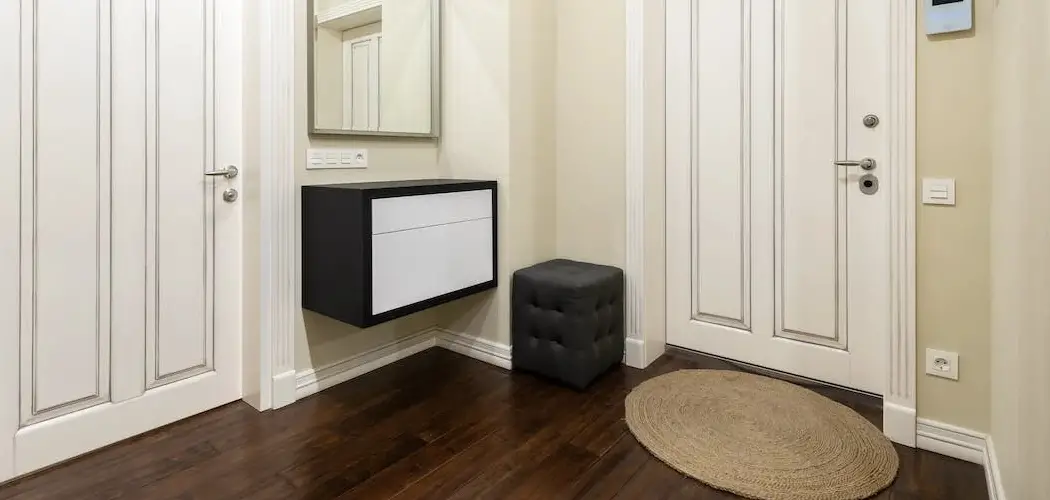Do you ever notice an unpleasant gap between the bottom of your door and the floor when walking in or out of a room? As unsightly as it may be, it’s actually more than just a cosmetic issue.
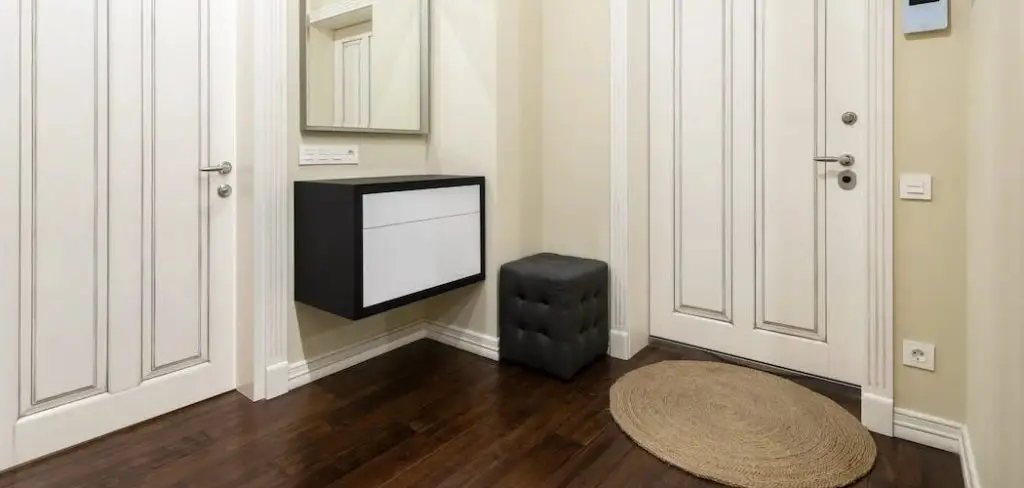
Whether due to improper installation, extreme weather changes, settling foundations, or something else entirely – this unwanted space can cause air drafts and energy loss in winter months! Instead of dealing with those issues each time you walk past that doorframe, why not fill in the gap once and for all?
In this blog post, we will explore how to fill gap between door and floor so you won’t have to worry about losing money on heating bills again!
What Can I Use to Fill the Gap between the Floor and the Door?
If the gap between your floor and the door is too wide, there are several solutions you can use to fill it. Depending on the size of the gap and whether or not you want a permanent fix, you may be able to get away with something as simple as weatherstripping or caulk.
If the gap is larger than one-quarter of an inch, however, you might need to try something more substantial, like foam insulation or a door sweep. Read on for more information about each of these solutions.
Weatherstripping is an ideal solution for gaps up to one-quarter of an inch wide. It is designed to create a seal between your floor and the door jamb that helps keep cold air out and warm air in. Installing weatherstripping doesn’t require any special tools and can usually be done in just a few minutes.
If the gap between your floor and the door is larger than one-quarter of an inch, caulk may also be used to fill it. Caulk comes in many different colors and is able to expand with changes in temperature, so it’s a good choice for gaps that are slightly larger than those filled with weatherstripping. It can also be used to fill smaller gaps around baseboards, windows, and other areas of your home.
For gaps wider than one-half of an inch, you may need to use foam insulation. Foam insulation comes in both spray and roll form, so it’s easy to find the right type for your needs. It can be used to fill large gaps and is also great for sealing around doors and windows.
Another option for filling larger gaps is a door sweep. Door sweeps are strips of material that are attached to the bottom of a door and help create a seal between the door and the floor. They are typically made of rubber or plastic and can be found in a variety of sizes to fit most doors.
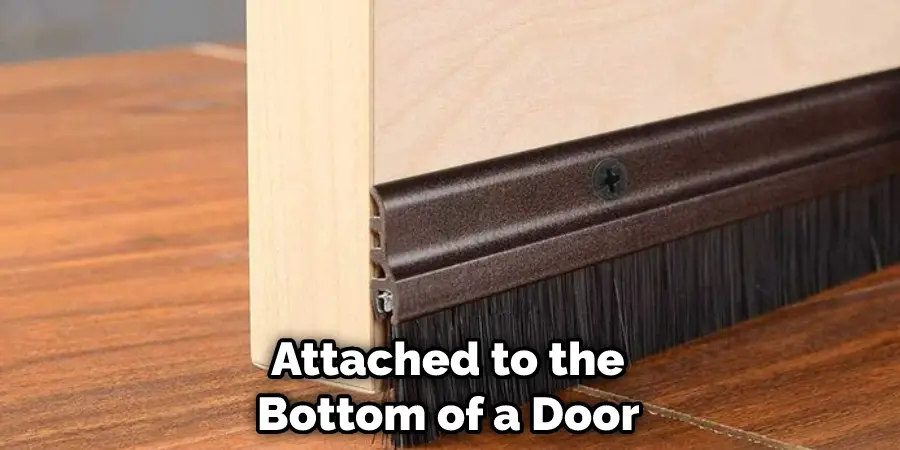
10 Methods on How to Fill Gap Between Door and Floor
1. Use Caulking
One of the easiest ways to fill a gap between a door and a floor is to use caulking. Caulking is a sealant that can be applied using a caulking gun. It is available in both latex and silicone varieties, so you can choose the type that best suits your needs. Caulking is ideal for small gaps as it can be easily smoothed over and will not shrink or crack over time. If you are using silicone caulk, be sure to use a product that is designed for use in door and window frames. While caulking is highly effective, it should be periodically inspected and re-applied as needed.
2. Use Weatherstripping
Another option for filling a gap between a door and a floor is to use weatherstripping. Weatherstripping is a strip of material that is placed around the perimeter of a door in order to seal it shut. It is typically made from foam or rubber and can be found at most hardware stores. Weatherstripping is easy to install and can be an effective way to fill larger gaps.
If you choose to use weatherstripping, be sure to select a product that is specifically designed for doors. Though it can work for a variety of door sizes and materials, it is best to get a product that matches your particular set-up.
3. Use Door Sweeps
Door sweeps are another option for filling gaps between doors and floors. Door sweeps are strips of material that are attached to the bottom of a door in order to seal off the space between the door and the floor. Door sweeps are available in both plastic and metal varieties and can be found at most hardware stores.
They are relatively easy to install and will provide a good seal between the door and the floor. However, they need to be replaced periodically in order to maintain the seal and prevent drafts from entering your home.
4. Use Thresholds
A threshold is a strip of wood or metal that is placed at the bottom of a door in order to close off the space between the door and the floor. Thresholds are available in a variety of materials, including wood, aluminum, and PVC, so you can choose the type that best suits your needs. Thresholds are easy to install and can be an effective way to fill larger gaps.
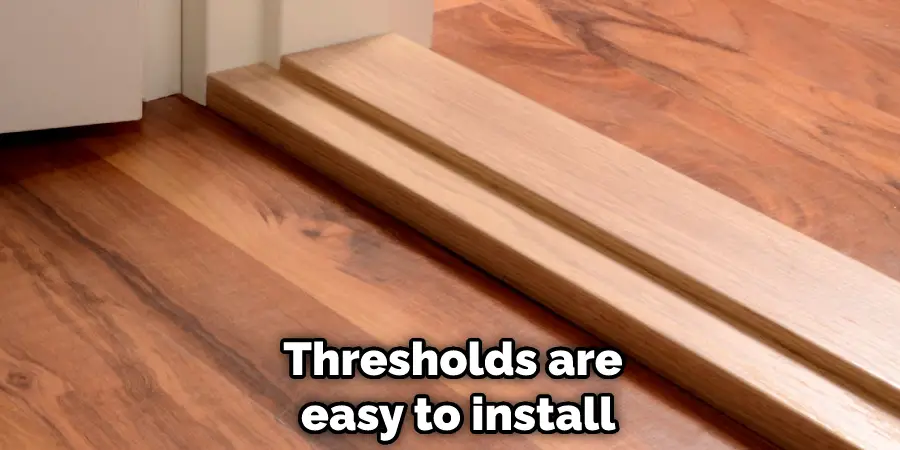
5. Use Door Shoes
Door shoes are another option for filling gaps between doors and floors. Door shoes are strips of material that are attached to the bottom of a door in order to seal off the space between the door and the floor. Door shoes are available in both plastic and metal varieties and can be found at most hardware stores.
They are an easy and cost-effective way to seal the gap between a door and the floor. They provide an aesthetically pleasing look, as well as a secure fit that will not come loose over time. Additionally, they prevent dust, bugs, and other debris from entering your home through the gap between the door and floor.
6. Use Expansion Joint Filler
Expansion joint filler is another option for filling gaps between doors and floors. Expansion joint filler is a flexible sealant that can be used to fill gaps of any size. It is available in both latex and silicone varieties, so you can choose the type that best suits your needs. Expansion joint filler is easy to apply and will not shrink or crack over time. However, it is not suitable for use in high-traffic areas as it can be easily damaged.
7. Use Foam Tape
Foam tape is another option for filling gaps between doors and floors. Foam tape is a type of adhesive tape that is made from foam material, making it ideal for sealing off small gaps. Foam tape is available in both clear and white varieties, so you can choose the type that best suits your needs. Foam tape is easy to apply and will not shrink or crack over time.
If you need to fill a large gap, you may want to use multiple strips of foam tape in order to get the desired effect. Additionally, foam tape is relatively inexpensive and can be found at most hardware stores. This makes it an ideal solution for those on a budget.
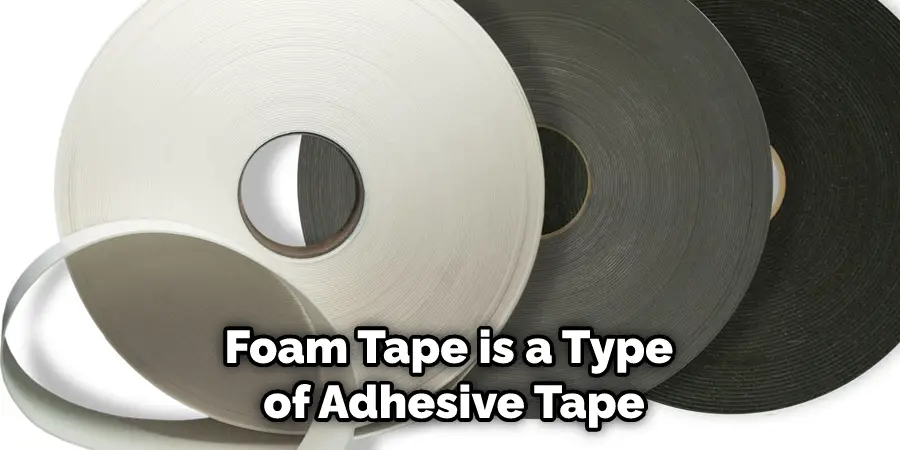
8. Use Door Sealants
Door sealants are another option for filling gaps between doors and floors. Door sealants are specially formulated to provide a durable and waterproof barrier between the door and the floor. They can be found in both latex and silicone varieties, so you can choose the type that best suits your needs.
Door sealants are easy to apply and will not shrink or crack over time. They provide an airtight seal and will help keep pests and cold air out of your home. When applying door sealants, be sure to check the manufacturer’s instructions, as some products require multiple coats for a proper seal.
9. Use Insulating Foam
Insulating foam is another option for filling large gaps between doors and floors. Insulating foam comes in both spray and roll form, so it’s easy to find the right type for your needs. It can be used to fill larger gaps and is also great for sealing around any cracks or gaps around windows and door frames. Insulating foam is easy to apply and will not shrink or crack over time.
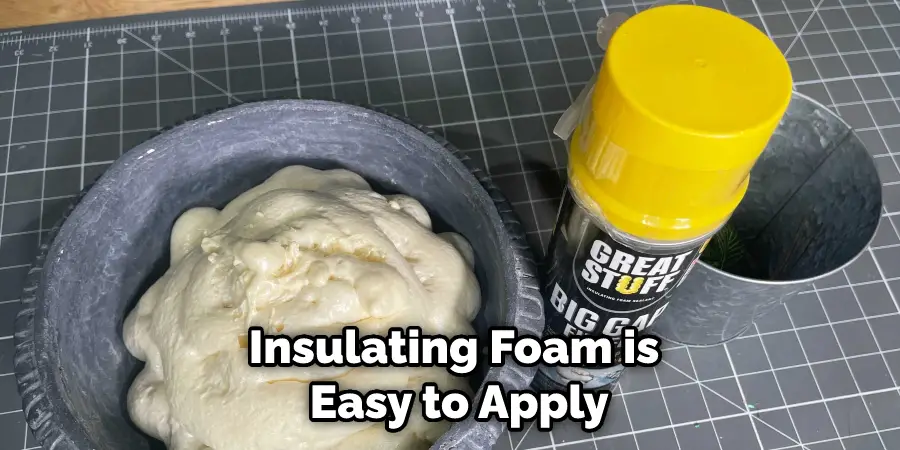
10. Use Door Threshold Inserts
Door threshold inserts are another option for filling gaps between doors and floors. These handy tools are designed to fit into the space between the door and floor, creating an instant seal. Door threshold inserts are available in a variety of materials, including wood, metal, and PVC, so you can choose the type that best suits your needs. Door threshold inserts are easy to install and can be an effective way to fill larger gaps.
Conclusion
Although a small detail, filling the gaps between your doors and floors can make a big difference in the overall look of your home. By using weather stripping or caulk, you can easily fill these gaps and create a cleaner look for your home.
Plus, filling these gaps can help keep insects and drafts out of your home. So next time you notice a gap, don’t ignore it – take care of it right away! Thanks for reading, and we hope this has given you some inspiration on how to fill gap between door and floor!
You Can Check It Out To Cut Groove in Bottom of Barn Door

